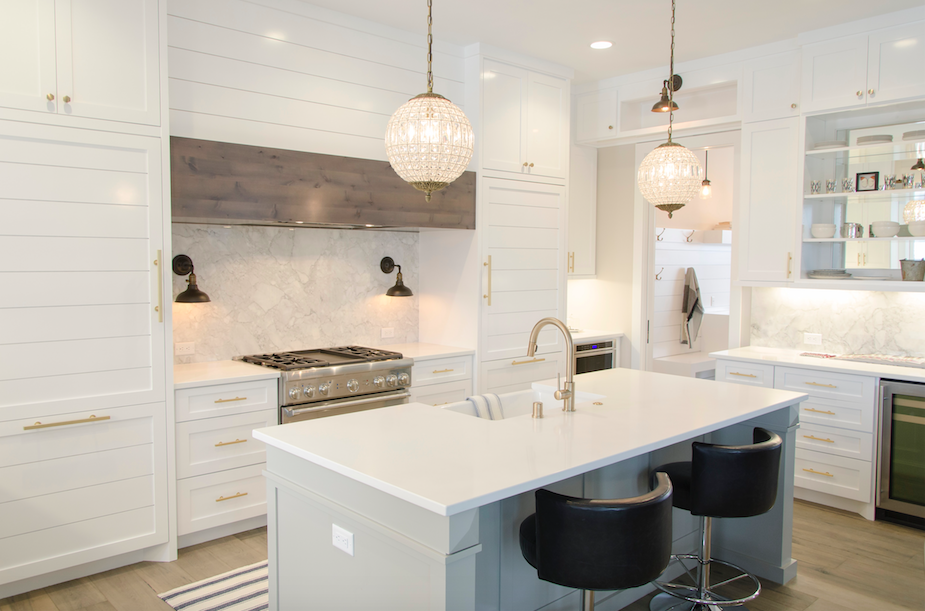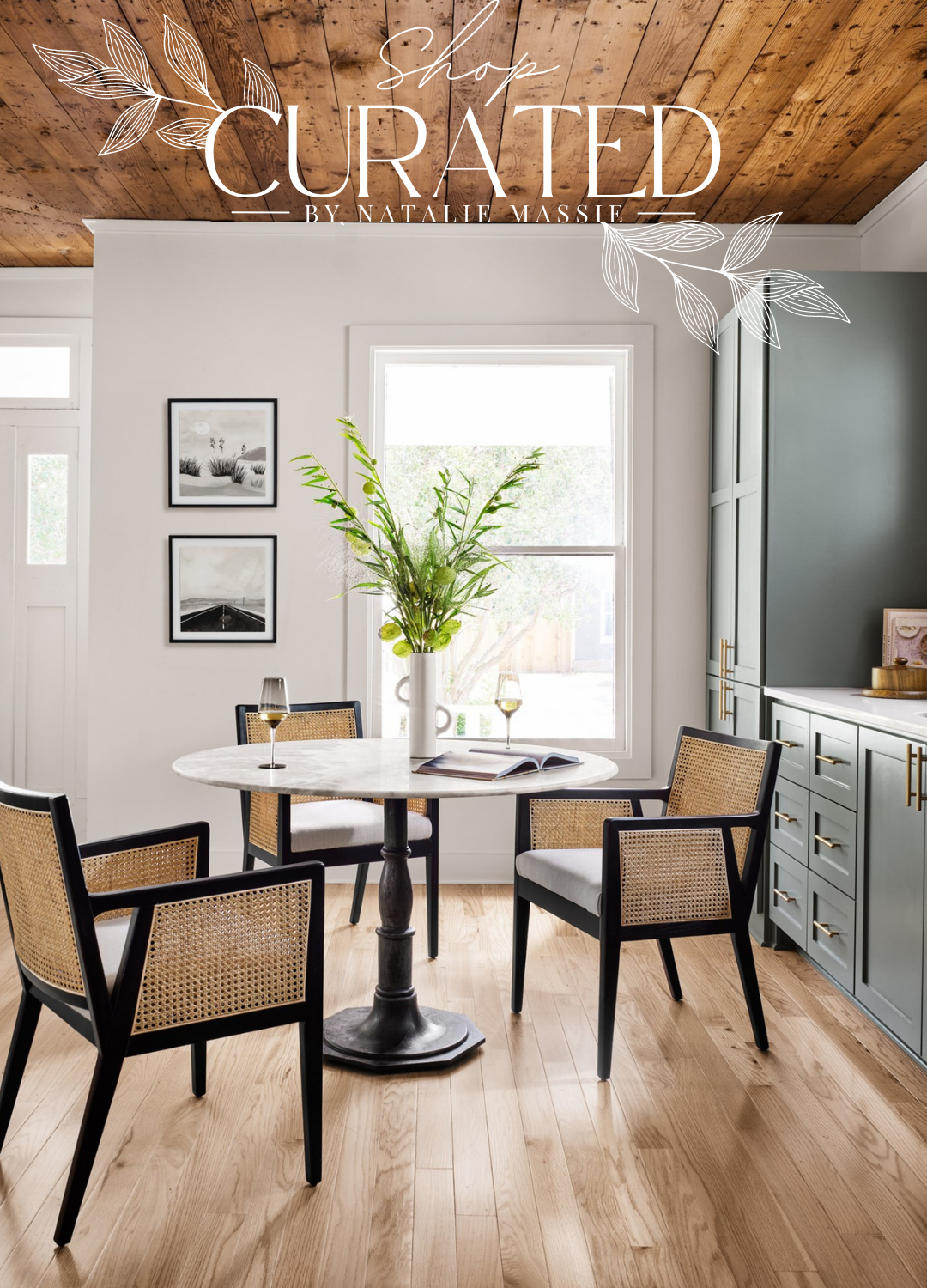

Yes, anyone can assist on new builds and remodel projects if there is a contractor on the project. The homeowner can also choose to act as contractor which means they are responsible for hiring their own subcontractors (ex. plumber, electrician, etc.) I personally don’t recommend acting as contractor unless you are licensed as there is a lot of liability that comes with remodels and new builds.
Even though I have a Bachelor’s degree and almost 10 years experience in the industry, I still choose not to act as contractor on a job as I don’t want to be liable for any safety issues such taking down a load bearing wall or fire safety. Also, there is always going to be something that arrives damaged or is installed correctly – the contractor and his team are responsible for correcting it and covering any costs associated with it.
I still love to help on remodel/new build projects but I help more in terms of making sure the spaces function well and look beautiful. For example, I might help the client rework the layout of the kitchen so that the fridge, sink, and stove are in a better work triangle. Or I may notice that the towel hooks are hung too far away from the shower to make them convenient to grab.
I also am involved with any selections like tile, flooring, counters, hardware, etc. to make sure the design is beautiful and cohesive. I help my clients with decisions and the contractor makes sure everything is up to code and hires out subcontractors to do the work.
Who orders the product?
Much like contractors, designers are also eligible for discounts at most trade sources (such as tile, counters, lighting, etc.). If there is an acting contractor on the job, I let them handle most ordering so they get the commission on the pieces. I do this for two reasons:
First, I don’t want to ruffle feathers and cause any resentment with the contractor. It’s to everyone advantage to keep the contractor happy so the project keeps on its timeline and they are more accommodating if you make changes. It’s important to have a good working relationship with the contractor and taking money out of his pocket definitely won’t help the relationship.
Second, the contractor will be liable for any issues with the order. Let’s say you choose a beautiful one-of-a-kind calacatta marble tile flown in special from Italy. There are several opportunities for something to go wrong with the tile – it could arrive damaged, the wrong amount could have been ordered, it’s installed incorrectly, the installer damages some and now they don’t have enough to finish the project (yes, I’ve seen it happen), etc. For me, all the potential issues and liability is not worth the commission.
The one exception to the rule is with lighting. I always suggest my clients ask the contractor to take any chandeliers and pendants out of their original bid. Lighting is such a crucial part of a home’s design (just like how a statement necklace can completely elevate the look of an outfit). Contractors will typically put “builder grade” lighting in every room which makes a home look cookie-cutter and cheap. I also make sure I specify hanging heights as electricians tend to hang lighting too high.
Things can get tricky when a client is acting as contractor on their project. Make sure you get a signed contract that keeps you liable from any issues with the selections. Don’t give any specifics on quantity (such as how much tile to order) – this is the responsibility they took on as contractor and they can ask their subcontractors for exact amounts. The client will also will be responsible for their own ordering or they can ask the subcontractors to order items for them – again, keep yourself out of the ordering process when possible.

How do I know I’m selecting the right products?
As you’re first dipping your toe in remodels and new builds, only help with selections from an aesthetic standpoint and be upfront with your client. Let them know that you would like to be a part of the selection process to make sure the overall look is cohesive but that you will be relying on the showroom staff to make sure your selections are safe and suitable for the use and location it will be installed in.
When working with the client, you can meet them at various local showrooms to look at the products in person. Make sure you call ahead of time and make an appointment, this is important to make sure a sales associate or showroom designer will be assisting you.
By having a representative from that showroom there during selections, they will help steer you in the right direction. Let’s say you find a beautiful glazed ceramic tile you think would look fantastic for the shower. The sales associate will let you know that’s not suitable for a shower floor as it will get slippery when wet but they can show you a similar looking tile that’s more slip-resistant. They will also make sure you don’t forget any selections like selecting the bullnose tile to finish off the edges.
Over time, you will be amazed how much information you learn by working with the showroom staff. You will also figure out which showrooms and staff members you like working with best. Be patient with yourself and be open to learning – you’ll eventually feel confident in the selection process.
How do I know all my selections will be cohesive?
To keep you on track, ask every showroom to give you samples of the items you’ve selected. I keep each client’s selections in a bin and I make sure to bring the bin with me every time we make selections. Even if you don’t think you’ll need them when you’re meeting, keep them out in your car just in case.
If the showroom doesn’t have samples available, they can always order you one (usually for free). Make sure you personally keep all the selections during the process, if the client wants to hold on to them, order them a second set of samples. If you are waiting for a sample to arrive, ask if you can check the showroom’s sample out and eventually return it when your own sample arrives. If not, take photos on your phone that show the colors accurately.
When the project wraps up, I give the bin to the client and tell them to store it somewhere in case we ever need to make changes down the road. I don’t hold on to their samples for them or else it would take over my whole house! I do make sure their client file has all the specifications for each product that I can always look up down the road.

What if you don’t want to help with remodels & new builds?
That’s okay! I know several designers who don’t enjoy the remodel and new build process (especially because it’s such a long hands-on process). You can still be successful and fully booked without taking on these types of projects. An easy way to avoid getting asked to do these types of projects is to call yourself an interior decorator instead of an interior designer.
Interested in Becoming an Interior Designer?
In my FREE 40 min. masterclass training you’ll learn how to become an Interior Designer and the first steps to take to start your Interior Design business.



